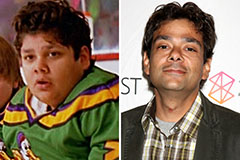With the fascinating and typically unforeseeable globe of expert fumbling, champion belts hold a importance that goes beyond mere decoration. They are the best signs of achievement, hard work, and prominence within the settled circle. Among the most prestigious and historically rich titles in the market are the WWF Championship Belts, a lineage that goes back to the very structure of what is currently referred to as copyright. These belts have not just represented the pinnacle of battling expertise but have also evolved in layout and significance together with the promo itself, ending up being famous artefacts valued by followers worldwide.
The journey of the WWF Champion started in 1963 when the World Wide Fumbling Federation (WWWF), the forerunner to the WWF and at some point copyright, was formed. Adhering to a disagreement with the National Fumbling Partnership (NWA), Northeast marketers established their very own banner and identified Pal Rogers as their inaugural WWWF World Heavyweight Champion on April 25, 1963. Surprisingly, some accounts suggest that Rogers was granted the WWWF title belt, which was an old United States title he currently had, as a placeholder till a new design could be produced.
Throughout the WWWF period (1963-1979), the champion belt went through a number of models, usually coinciding with the periods of its most prominent holders. Bruno Sammartino, the legendary "Living Tale," held the title for an astounding consolidated total of over 4,000 days across 2 regimes. During his time, different designs were seen, including one formed like the adjoining United States, highlighting the local origins of the promotion. Later on, a much more typical style including 2 wrestlers grappling over an eagle became associated with Sammartino's second reign and the champions that followed him, such as "Superstar" Billy Graham and Bob Backlund.
The year 1979 marked a substantial shift as the WWWF formally came to be the Whole world Fumbling Federation (WWF). This rebranding would ultimately cause modifications in the champion's name and appearance. In the early 1980s, as the WWF started its climb towards coming to be a worldwide sensation, a bigger, green leather belt with large gold plates was presented. This layout included a wrestler holding a championship with the globe behind him, emphatically proclaiming the owner as the " Whole world Champ." Significantly, the side plates of this variation listed the family tree of previous champions, a tradition that recognized the title's abundant history. This iconic belt was held by figures like Bob Backlund, The Iron Sheik, and, a lot of notoriously, Hunk Hogan, that carried it during the "Hulkamania" era, a period of unmatched mainstream success for the WWF.
The mid to late 1980s saw the introduction of what many think about among the most precious styles in battling background: the "Winged Eagle" champion. Debuting in very early 1988, with Hunk Hogan as the very first holder, this layout featured a majestic eagle with outstretched wings as the focal point, flanked by smaller sized side plates. The "Winged Eagle" belt came to be a symbol of excellence throughout the late 1980s "Rock 'n' Wrestling" period and well right into the 1990s " Brand-new Generation" age. Famous champions such as Randy Savage, The Ultimate Warrior, Bret " Hit Man" Hart, and Shawn Michaels all proudly held this variation of the title. The "Winged Eagle" also transitioned right into wwf belts the very early years of the " Perspective Period," with "Stone Cold" Steve Austin being the last full-time champ to use it.
The "Attitude Era," which took off in popularity in the late 1990s, brought with it a more aggressive and edgy aesthetic, reflected in the WWF Champion layout. In late 1998, the " Huge Eagle" belt was presented. This style included a bigger central plate with a popular WWF " scrape" logo, symbolizing the company's modern identity. While keeping a sense of prestige, the " Large Eagle" layout lined up with the defiant spirit of the era and was held by famous figures like "Stone Cold" Steve Austin, The Rock, and Mick Foley.
As the calendar turned to the brand-new millennium, the WWF went through another transformation, becoming Entire world Fumbling Entertainment (copyright) in 2002. This age also saw the marriage of the WWF Champion with the copyright Championship ( gotten after copyright's purchase of Whole world Champion Wrestling). The "Undisputed" champion was stood for by both the " Huge Eagle" and the copyright's "Big Gold Belt" being held all at once. This unification was brief, as the re-established copyright split its lineup right into two brands, Raw and copyright, causing the development of a new Globe Heavyweight Champion for the Raw brand name, while the original title came to be unique to copyright and was relabelled the copyright Championship.
Ever since, the copyright Champion has remained to develop in name and style. In the mid-2000s, John Cena presented the " Rewriter" belt, a controversial however without a doubt attention-grabbing style featuring a big copyright logo that can rotate. This showed Cena's character and attract a younger audience. Succeeding styles have actually intended to mix contemporary aesthetic appeals with a feeling of background and eminence.
Recently, specifically since April 2022, the copyright Championship has been protected along with the copyright Universal Championship as the Undisputed copyright Universal Champion, though both titles maintained their private lineages. Originally represented by both belts, a solitary, unified style ultimately emerged, adorned with black rubies and the owner's customized side plates. Since April 13, 2025, Cody Rhodes holds the Undeniable copyright Champion, having actually linked it after defeating Roman Powers at copyright XL in 2024. Following his success, copyright officially relabelled the merged title to the Indisputable copyright Championship.
The WWF Champion Belts, throughout their numerous iterations, have acted as more than just rewards. They stand for legacies, ages, and the plenty of stories informed within the wrestling ring. Each layout is intrinsically linked to the champions that held them and the periods they defined. From the classic magnificence of the "Winged Eagle" to the bold statement of the "Spinner" and the present unified style, these belts are tangible pieces of battling background, quickly recognizable signs of achievement worldwide of specialist wrestling. Their development mirrors the evolution of the business itself, frequently adapting to the times while permanently honoring the abundant practice whereupon they were built.
 Shaun Weiss Then & Now!
Shaun Weiss Then & Now! Tatyana Ali Then & Now!
Tatyana Ali Then & Now! Jeremy Miller Then & Now!
Jeremy Miller Then & Now! Michael Jordan Then & Now!
Michael Jordan Then & Now! Jeri Ryan Then & Now!
Jeri Ryan Then & Now!